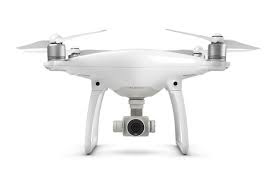In Matthew 27.65, Pilate agrees to assign a group of guards to watch over the tomb of Jesus to ensure that his body is not stolen.
The names
of the guards are not disclosed by Matthew.The apocryphal Gospel of Peter (31),
dated to the second century BC, does not provide the names of all the soldiers
involved in this task, but it tells us that the guards were supervised by a
Roman centurion named Petronius.
The Book of
the Bee presents two versions on how many guards were watching over Jesus’s
tomb. In chapter 44, there were five guards in total, who were named Issachar,
Gad, Matthias, Barnabas, and Simon.In the next verse, however, the Book of the
Bee presents another version about the guards: “But others say they were
fifteen, three centurions and their Roman and Jewish soldiers.”
The apocryphal Acts of Pilate tells us that the
name of this soldier was Longinus (16.7). The spear is known as the Holy
Lance.Interestingly, Christian tradition claims that the Holy Lance was
discovered during the First Crusade in Syria in June 1098. The story of this relic
is confusing, and today, there are many relics that are said to be the Holy
Lance. One of these is preserved in Rome at Saint Peter’s Basilica.
During
the crucifixion, the gospel of Matthew (15.27) reports that two thieves were
crucified on either side of Jesus. In Luke (23.39–43), we can even read a short
conversation between Jesus and the thieves. One thief, usually known as the bad
thief, demands of Jesus, “If thou be Christ, save thyself and us.”
The other thief, the good one, asks Jesus to
“remember me when thou comest into thy kingdom.” The names of these characters
are not provided in the Bible. Several extra-biblical sources offer us
different versions of their names (Metzger and Coogan 1993: 548). An apocryphal
text known as the Acts of Pilate (aka the Gospel of Nicodemus) refers to them
as Gestas and Dysmas (10.2).
An Old
Latin Gospel says that their names were Zoatham and Camma. The apocryphal
Arabic Gospel of the Infancy adds additional information on the lives of these
thieves.While Joseph, Mary, and Jesus (still an infant) are crossing a desert
during the night, they meet the two thieves.
The bad
thief does not want to let the family go. The good thief offers the bad one 40
drachmas and his belt to let Jesus and his parents move on. At this point,
Jesus anticipates their fates and confirms their names (Arabic Gospel of the
Infancy, 23):Thirty years hence, O my mother, the Jews will crucify me at
Jerusalem, and these two robbers will be raised upon the cross along with me,
Titus [the good thief] on my right hand and Dumachus [the bad thief] on my
left; and after that day Titus shall go before me into Paradise.
The widowed
mother of the dead man is among the crowd, and her name is not disclosed in the
gospel.Her identity is provided by an ancient book known as the Coptic text on
Christ’s resurrection, where we read that the widow was named Lia or Leah.
Interestingly, the authorship of this text is ascribed to Bartholomew, one of
Jesus’s apostles (Metzger and Coogan 1993: 547).
In
Matthew 15.22–28, we read the story of a woman from Canaan who asks Jesus to
save her daughter who was possessed by a demon.
This same
story is presented in Mark 7.25–30. But this time, the woman is presented as
Syrophenician.Neither version of the story discloses the women’s names. A
third-century text known as the Pseudo-Clementine Homilies says that the woman
who asked for Jesus’s help was named Justa and her daughter’s name was
Berenice. In the end, Jesus casts the demons out and Berenice is found
recovered in her own bed (Metzger and Coogan 1993: 547).














